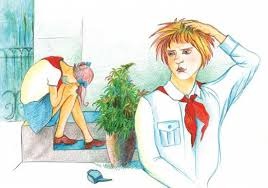Most Common Mistakes Made by Beginner Growers
Growing your first plants can be exciting, but many beginners make similar mistakes that can harm their crops. Here are the most frequent errors and how to avoid them.
Overwatering Plants Grown in Soil
After planting, estimate the dry weight of your pot. Water thoroughly until water drains from the bottom, then weigh it again. Only water again when the pot feels as light as it did before watering. This helps prevent overwatering, which can kill your plants.
Overfeeding Your Plants
Beginners rarely underdo things. If nothing else works, follow the instructions on your fertilizer bottle—but use only a quarter of the recommended dose, especially with brands like GH. Too much fertilizer can do more harm than good.
Overanalyzing the Growth Process
Your first grow is like your first child—you worry about every little thing. Pay attention to your plants, but don’t try to fix every yellow leaf. Adding more nutrients often causes more problems than it solves. React if something is truly wrong, but be cautious with your remedies.
Spending Too Much on Equipment
Many beginners invest in expensive, unrealistic setups for their first grow. It’s more effective to learn the basics first, then upgrade your equipment later. Most experienced growers don’t have space for unnecessary gear.
Posting Too Much on Forums
Try searching online before posting questions. Chances are, your question has already been asked and answered.
Don’t Overwater
Overwatering kills marijuana plants. Water only when the top few inches of soil are dry.
Don’t Tell Anyone You’re Growing
Sharing your grow can lead to jealousy and unwanted attention. People like to feel important and may tell others. No one can keep a secret you couldn’t keep yourself.
Don’t Touch Germinating Seeds
It can take up to 10 days for seeds to sprout. The paper towel method is not recommended because moving seeds from the towel to the soil can damage them.
Don’t Overfeed
Start fertilizing only after the first two serrated leaves appear. Begin with a quarter of the recommended dose and gradually increase. If leaves curl or twist unexpectedly, water with clean, filtered water for a few days.
Don’t Fertilize Every Time You Water (for Soil Grows)
Typical watering schedule: fertilize with a full-strength solution, then water with a 50–25% solution. This prevents salt buildup and root or leaf burn. Never use full-strength fertilizer if the soil is too dry, as it can burn the roots. As a precaution, flush your plants with plenty of clean water every 2–4 weeks.
Don’t Underfeed
Underfeeding is less common. If you prefer to give your plants moderate nutrients, use organic soil mixes high in nitrogen and phosphorus, or slow-release fertilizers with micronutrients.
Don’t Start with Clones
Start from seeds. Pests and diseases are a big problem with clones. Many growers can go years indoors without pest issues, but clones from others almost always come with bugs or diseases.
Don’t Put Plants in Poor Conditions
Always provide fresh air circulation, even during night cycles. Replace all the air in the grow space every 5–10 minutes. Keep humidity between 30–70% and temperature between 75–85°F (24–30°C). Even seedlings need a gentle fan to strengthen their stems.
Don’t Harvest Too Early
About 25% of the final weight forms in the last two weeks of flowering. Start harvesting when the plants have completely stopped growing and at least 50–75% of the white pistils have turned brown. Outdoors, if security is a concern, decide for yourself when to sacrifice your plants. Also, harvest buds regularly if there’s a risk of theft.



